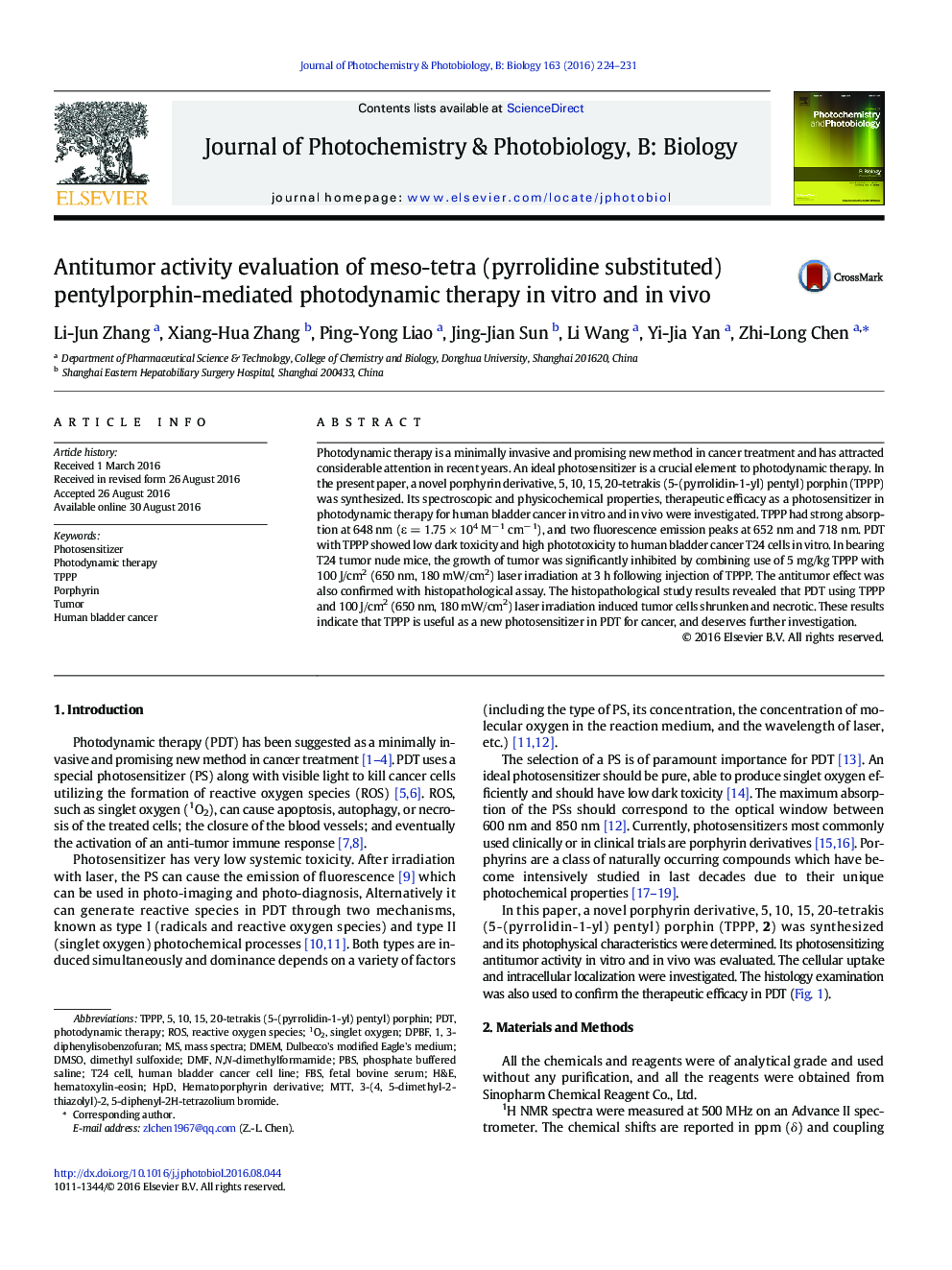| Article ID | Journal | Published Year | Pages | File Type |
|---|---|---|---|---|
| 4754668 | Journal of Photochemistry and Photobiology B: Biology | 2016 | 8 Pages |
â¢Effects evaluation of a novel photosensitizer on human bladder cancerâ¢The photosensitizer displayed a high singlet oxygen quantum yield.â¢The photosensitizer had low dark toxicity in vitro and in vivo.â¢The photosensitizer showed good anti-tumor activities in vitro and in vivo.
Photodynamic therapy is a minimally invasive and promising new method in cancer treatment and has attracted considerable attention in recent years. An ideal photosensitizer is a crucial element to photodynamic therapy. In the present paper, a novel porphyrin derivative, 5, 10, 15, 20-tetrakis (5-(pyrrolidin-1-yl) pentyl) porphin (TPPP) was synthesized. Its spectroscopic and physicochemical properties, therapeutic efficacy as a photosensitizer in photodynamic therapy for human bladder cancer in vitro and in vivo were investigated. TPPP had strong absorption at 648 nm (ε = 1.75 Ã 104 Mâ 1 cmâ 1), and two fluorescence emission peaks at 652 nm and 718 nm. PDT with TPPP showed low dark toxicity and high phototoxicity to human bladder cancer T24 cells in vitro. In bearing T24 tumor nude mice, the growth of tumor was significantly inhibited by combining use of 5 mg/kg TPPP with 100 J/cm2 (650 nm, 180 mW/cm2) laser irradiation at 3 h following injection of TPPP. The antitumor effect was also confirmed with histopathological assay. The histopathological study results revealed that PDT using TPPP and 100 J/cm2 (650 nm, 180 mW/cm2) laser irradiation induced tumor cells shrunken and necrotic. These results indicate that TPPP is useful as a new photosensitizer in PDT for cancer, and deserves further investigation.
Graphical AbstractDownload full-size image
